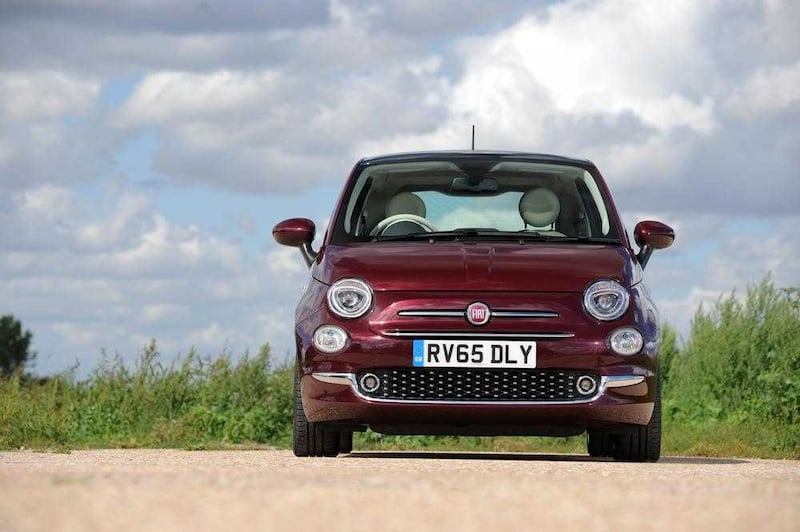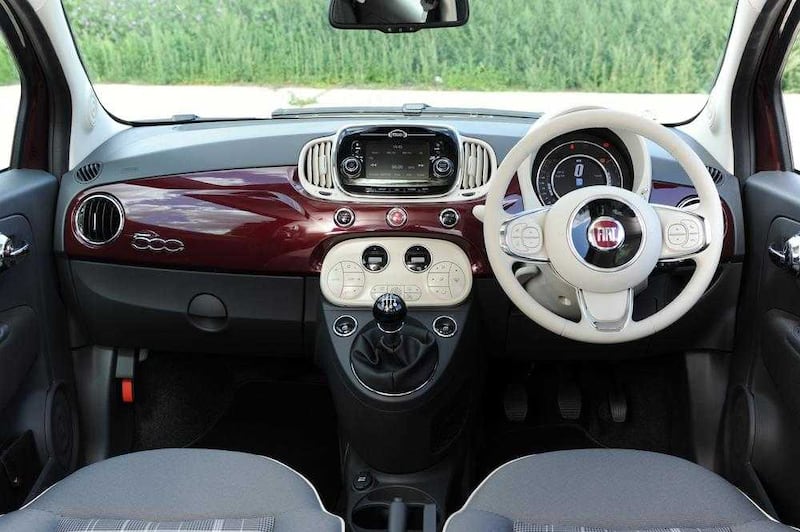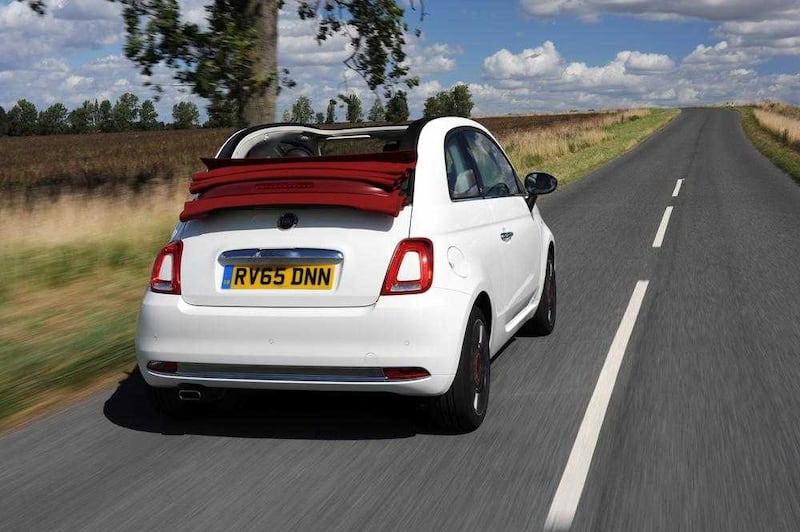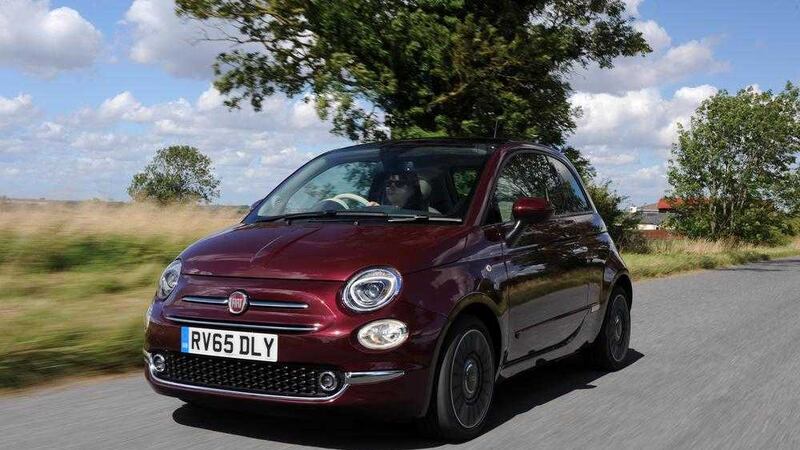IT is almost impossible to think of a more girly mode of transport than a Fiat 500, apart perhaps from one of those girls' bicycles with streamers hanging from the handlebars and a doll's seat.
The 500, then, is My Little Pony, Anna and Elsa and Barbie on wheels. It's the sort of car that primary school girls desperately want their mums to drive.
And that's before Fiat goes and further emphasises its femininity by going mad with the blusher, lipstick and mascara and painting it in a shade it describes as 'glam coral', but which the rest of us call 'pink'.
A thus war-painted 500 was delivered to the Irish News a few weeks ago. This was to allow me to try out what Fiat calls a new car and report back to you on the latest incarnation of the little city car which has been sashaying its doe-eyed way around our streets since 2007.
Manfully resisting the urge to take the train home rather than be spotted driving a pink Fiat My Little Pony, I initially gave the car a thorough visual examination.
The 500, then, is My Little Pony, Anna and Elsa and Barbie on wheels
From the outside, it looks almost exactly identical to the last 500, throwing Fiat's 'new' claims into immediate doubt.
Different lights and bumpers are about your lot. For added girliness, Fiat has managed to make the headlamps look as if the 500 is fluttering its eyelids.
'New' in this case is, of course, motor industry shorthand for 'facelift', with Fiat identifying 1,800 changes over the 'old' car. A lot of these seem to relate to paint colours, new upholstery and wheel designs.
Inside, the most immediately obvious change is the addition of a fancy TFT digital screen for the speedometer and trip computer information and the arrival of a properly integrated touchscreen to control the satnav and audio.
There's a USB socket and Bluetooth for connectivity - essential kit these days, particularly among the younger, fashion-conscious audience Fiat courts.
It's difficult to spot too many other changes. This is a shame, and means the 'new' Fiat 500 probably has to go down as a missed opportunity.
The 500's cutesy, retro-pastiche styling has always had something of the Marmite about it - I dislike it, as you may have gathered, but I can understand why you might love it - but beyond the design, it is increasingly difficult to see where the Fiat's appeal lies.

The driver, for example, is subject to a long and weary series of irritations.
The seat is particularly uncomfortable. I could feel the steel bar across the base of the seatback digging into my spine - the last vehicle this happened in was the Great Wall Steed, a Chinese pick-up...
The driving position is awful, with awkwardly angled pedals housed in a narrow footwell and a gearchange distinguished by being long and vague, like Barbie's hair.
The gearchange/clutch pedal interface takes on added wickedness when paired with Fiat's tiddly TwinAir engine.
This 0.9-litre two-cylinder unit craves revs and has a very narrow power band, which means that progress around town is torturous.
The sequence goes something like this: depress clutch and heave gear lever into first; release clutch and squeeze throttle, trying to ignore the chainsaw buzz from under the bonnet; as the car moves forward, lift left foot and carefully position under clutch pedal; as soon as that process is concluded it's time to start again, as second is now needed because the engine is screaming for another gear and you've just hit the abrupt rev limiter... and repeat, over and over and over again, with variations of gearshift vagueness thrown in along the way just to keep you on what is, by now, left of your toes.
Professional organists may find all this a doddle but it wore me out before reaching the M1. Paradoxically, it means that this city car is at its most relaxing on a motorway cruise, where the tap dance routine is no longer necessary.

Weirdly, the TwinAir's racket fades away at motorway speeds and sixth gear. The rest of the time it is a symphony of noise and vibration which sounds like it is going to jump out of the glovebox and maul you.
Some people will try to convince you that the revvy little TwinAir has character and it does, in much the way a room full of toddlers banging biscuit tins with rattles also has character.
Professional organists may find all this a doddle but it wore me out before reaching the M1. Paradoxically, it means that this city car is at its most relaxing on a motorway cruise, where the tap dance routine is no longer necessary.
Nor is it anywhere near as economical as a car of this size should be. A 1.2-litre four-cylinder with a paltry 68bhp, which must feel incredibly slow, is also available.
The TwinAir itself comes in two flavours: 84bhp and, thanks to the addition of a turbocharger, 104bhp.
The test car was the more powerful, presumably shoutier, version. Nor does the 500 offer any particular reward to the enthusiastic driver.
Among the 1,800 changes to the 'new' 500 are updated interior plastics, switches and so on. While an improvement, there is nothing here to give Hyundai or Suzuki, much less Mini, sleepless nights.
The cabin is narrow - I got the handbrake and seat height adjuster muddled more than once... - and cramped, too, and the 500 remains resolutely three-door only, when most other small cars can also be had with five-doors. Even my six-year-old son struggled for space in the back seat.
Lazy parallels are often drawn between the 500 and the Mini. But where the 'new' Mini is now onto its third generation, the Fiat has only enjoyed one major facelift.
And while the Mini has always shared the 500's sense of style, it has a depth of engineering and quality denied the Fiat.
The game has moved on, substantially, since the reincarnated 500 saw light.
The Mini remains in a different league and a whole swathe of fresh, new city cars - from the Volkswagen Up/Seat Mii/Skoda Citigo and Toyota Aygo/Citroen C1/Peugeot 108 triumvirates to the Hyundai i10, Suzuki Celerio and Vauxhall Viva - are objectively better than the Fiat; even the Panda, which is a 500 without the tutu, is a more authentic, honest and useful small car.
The cheapest 500 weighs in at just under £11k, though attractive finance deals always seem to be available.
The test car was a 500C, which means it had a big canvas sunroof. It also cost more than £18,500 - a figure which made the car park juries convened during my stewardship gasp, and which makes the case for the Fiat harder to sustain.
Fiat has a long and distinguished tradition of building small cars, and the 500 has been an undoubted success for the company.
If you like the styling and think a 500 will help you make a fashion statement of some sort, then you will have already made up your mind and happily overlook its shortcomings.
Fiat can do better - and no doubt will when a genuinely all-new 500 eventually zips into view, hopefully sooner rather than later - and for me, the 500's appeal is at best shallow.









